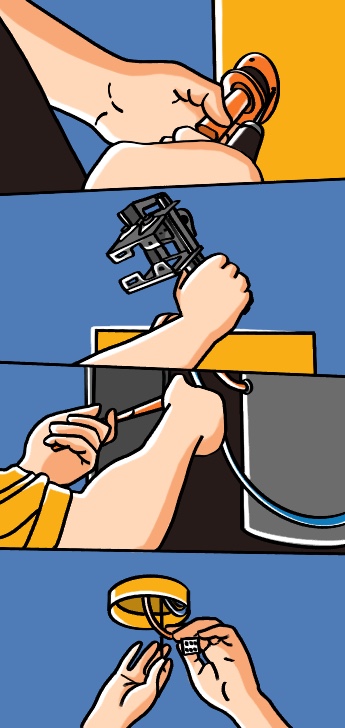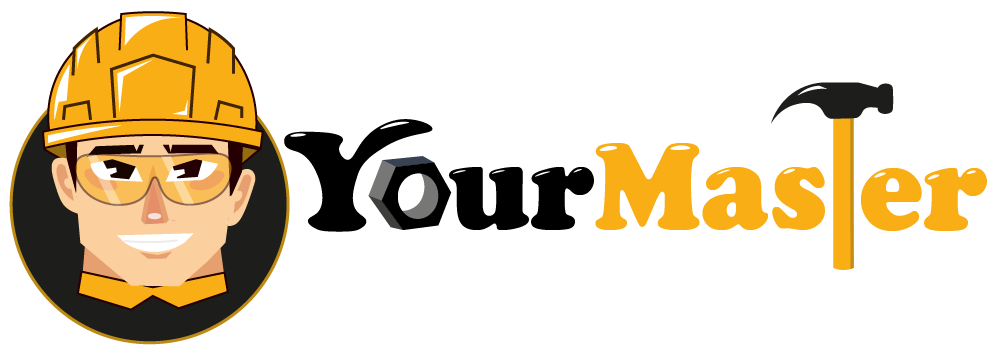Stay safe! Have your battery-operated smoke and carbon monoxide alarms installed correctly
Service provided by experienced alarm fitters near you
- High decibel warning of smoke or carbon monoxide gas leak
- CE-marked* smoke and carbon monoxide alarms that meet the latest British Standards
- Ensures landlords meet all safety regulations and avoid a penalty charge of up to £5,000
- Alarm maintenance options available
Get your CO and smoke alarm fitting done in 4 steps
1.Check prices and availability and book your service online
2.A skilled technician will come to your address with all needed tools
3.He will install the new alarms or swap out the batteries of existing units
4.The handyman will make sure every unit works properly, and the job is done
Why should you outfit your property with a smoke or CO alarm?
The dangers of carbon monoxide
Released by the incomplete burning of fuels, carbon monoxide is a highly toxic and flammable gas that shouldn’t be toyed with. A carbon monoxide alarm will warn you about the presence of toxic gas in the air produced by faulty gas appliances before it is able to reach high levels.
The dangers of a fire outbreak
Nobody can surveil their property for fires 24/7. Despite the indisputable benefits that fire alarms provide, many homes and businesses in the UK still opt not to include this basic safety feature. As a result, the fire rescue services are called to extinguish over 600,000 fires each year.
These fire outbreaks claim the lives of more than 800 people and injure 17,000 others.
Out of those statistics, nearly 500 deaths and 11,000 injuries happen in a domestic environment. For a small investment that is the cost of a smoke or a carbon monoxide detector installation, you will be able to protect your property and family 24/7 by instantly reacting to the threat.
What to expect from the CO and smoke detector installers near you?
The smoke alarm fitters are uniformed, insured, and have the qualifications to assist you with:
- Smoke detector replacement, installation, and sourcing of all alarm devices, including ionisation, optical (photo-electric), heat, and combined alarms. Each unit meets the 5839-6:2013 British Standard for Fire Detection and Fire Alarm Systems for Buildings;
- Testing your newly installed smoke alarm or carbon monoxide unit to ensure it’s working properly. This also includes a battery check of any pre-existing detectors in the building;
- Providing a CO and smoke alarm maintenance service. A routine inspection of your units is recommended once every year, unless you own a ten-year fire detection unit.
Note: The technicians currently specialise in the installation of battery-operated detectors only.
| Appointments | Monday – Saturday | Sunday | |
|---|---|---|---|
| 8 am – 6 pm | After 6 pm | 8 am – 6 pm | |
| First half hour | £ 28 | £ 32 | £ 32 |
| Subsequent Half Hours | £ 24 | £ 25 | £ 25 |
Booked 3 hours, but the job took 2? No worries, you only pay for the actual time the service took.
*The minimum time per appointment is 1 hour (£31+£24=£55). After the first hour, we will charge on a half-hour basis. Prices are inclusive of all taxes.
Upon your request, the technician can source additional materials from the local store. We charge £35 per hour to supply them and the costs for the shopping time and materials will be added separately on top of the price.
T&Cs and Minimum Charges apply. When we calculate the price, we also take into consideration the area’s dimensions and the time of the appointment. All prices and deals are valid for areas within M25. Deals cannot be combined with any other deals and promotions. Prices are subject to availability. Congestion charges are excluded (when applicable).

Frequently Asked Questions
Why should my rental property have a CO or a smoke alarm detector?
Fires are unpredictable, and so is gas appliance malfunction. Tragic fire hazard deaths are four times more likely to occur if a single smoke alarm is not fitted in a rental property, shows information published on the UK government’s official website. A CO and smoke detector installation service will keep your tenants safe while also helping you avoid hefty fines.
What type of alarm installations can you install?
The fitters to work with most alarm types on the market. These include:
- Ionisation alarms – inexpensive, but not that good at detecting slow-burning fires. They are, however, sensitive to the smoke released by fast-flaming fires (paper, wood, etc.);
- Optical alarms – a bit more expensive, but a lot better at detecting slow-burning fires (melting PVC wiring, etc.). They are, however, less effective at noticing fast-flaming fires;
- Heat alarms – extremely sensitive to changes in temperature, but insensitive to the presence of smoke. They cover only a small radius and are usually installed in kitchens;
- Combined optical smoke and heat alarms – this hybrid unit reduces false alarm situations to a minimum and is considerably faster at locating the threat;
- Combined smoke and carbon monoxide alarms – a compact, ceiling-mounted combination that offers you simultaneous fire and CO protection at a fair price.
Which of these alarms will suit my property best?
Your choice of a smoke or CO alarm should be based on the type of room in which you are planning to install it. Here are some examples:
- For kitchens or garages, go for heat alarms;
- For landings, go for ionisation smoke or combined alarms;
- For bedrooms, living rooms, and hallways, go for optical smoke or combined alarms.
Which are the latest CO and smoke detector landlord requirements?
As of the 1st of October 2015, private sector landlords are obligated by law to:
- Have at least a single smoke alarm present on each property floor;
- Install a carbon monoxide alarm in rooms containing solid fuel appliances;
- Check if all alarms are fully operational prior to the new tenants moving in.
How many alarms should I install in my property and where?
While there is no recommended minimum count that your property has to meet, the more of these units you have around, the better. Make sure that your smoke alarms are securely fixed on the ceilings of more busier areas of your premises, such as the hall or the landing.
Carbon monoxide alarms should be positioned at direct head height on either a wall or a shelf. They should also be at least one metre away from any fuel-burning appliances. Finally, test your alarms at least once a month to ensure that they are audible in any part of your house or flat.
Is it difficult to maintain my smoke and CO alarm?
Not at all! Just make sure to follow the manufacturer’s guidelines. It’s recommended that you test your detectors each month. Batteries, on the other hand, should be replaced once a year. If you just installed your carbon monoxide or smoke unit, don’t worry about replacing it anytime soon – if properly maintained, you should only book an alarm replacement once every 10 years.

